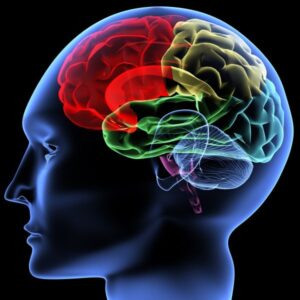
The brain is the most complex feature of the human body, and there are still many mysteries to unravel about how it functions. Neurologists and linguists still do not understand much about how our minds manage to achieve the incredible act of speaking and comprehending language. Still, scientists believe they have a basic outline of how audio stimulation travels through the brain and is interpreted into meaningful words. Here is the path the information takes when it enters our ears:
- Initial Transmission
When sounds of speech reach the ear, they travel through the ear and eventually reach the cochlea. The sound waves stimulate hair cells of the cochlea and transmit the signal in the form of an electrical charge through the auditory nerve.
- First-Level Processing
The electrical charge travels to the cochlear nuclei located in the brain stem. Here, basic processing of the sound occurs. The cochlear nuclei extract basic information from the signal like frequency and amplitude. Information about timing is also extracted here by onset neurons which spark in sync with the incoming stimulus.
- Binaural Integration & Audio-Visual Integration
Next, the superior olivary cortex integrates the separate stimuli from each ear. It then sends the information on to the inferior colliculus, which completes further analysis and determines the location from which the sound is coming. The inferior colliculus also connects incoming auditory signals with simultaneously incoming visual signals.
- Relative Timing & Auditory/Motor Integration
Now, the medial geniculate nucleus in the cerebrum interprets the differences in sound timing and intensity, which were noted in Step 2 by the onset neurons and cochlear nuclei. As this occurs, the auditory signals are matched up with the motor neurons that are responsible for speech production. These motor neurons do not activate actual articulation when we are listening, but they are activated every time we hear and process speech.
- Speech Perception
The last step of the process occurs in the auditory cortex where all of the previously extracted data about the incoming sound is assembled. Frequency, amplitude, timing, and more are put together and are matched with an existing stored linguistic unit. This is how sound vibrations entering our ears are comprehended and given meaning.
Our ability to make meaning out of arbitrary sounds is so amazing! What do you think is the most interesting or impressive part of the process?
_____________________________________________________________________
You may also be interested in the following:
Ebook: Top Ten Tips for Interpreters and Translators
Article: 8 Things You Need to Know About Translation Equipment
Article: Skills Simultaneous Interpreters Should Bring to the Profession
_____________________________________________________________________






